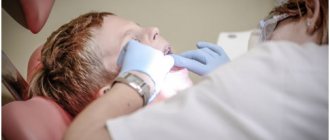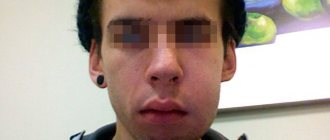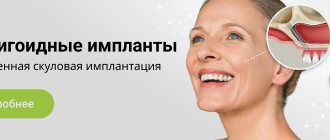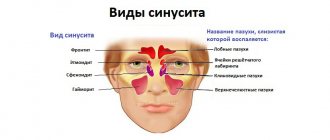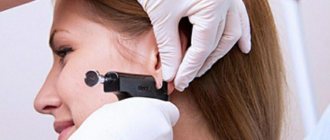What can cause an attack?
Infections that cause fever. The infection can be caused by bacteria, but more often febrile attacks occur with viral diseases (for example, roseola and influenza).
Vaccinations that cause fever. There is a small chance of febrile seizures after vaccination against measles, rubella and mumps, and diphtheria, tetanus and whooping cough. But the risks from incomplete vaccination are higher than the risk from a febrile attack after vaccination.
Heredity. If either parent has had a febrile seizure, the child is more likely to have seizures with fever.
A febrile attack, especially one occurring for the first time in life, is very frightening for parents. In fact, most of these attacks are not dangerous and do not lead to complications or brain damage. A child with simple febrile seizures is only slightly more likely to develop epilepsy than children who have never had a febrile seizure.
Heart diseases
— The main cause of sudden death in both children and adults is heart disease. The main danger of heart diseases is that they are often asymptomatic until they reach critical conditions. However, there are always signs of cardiac problems that should alert parents.
Almost all children with heart disease periodically (or constantly, which is why this is often perceived as an individual characteristic) experience pallor, weakness, and increased fatigue. A child with heart problems sits down to rest, catch his breath, and come to his senses. Many of them are stunted in height and weight.
Article on the topic
Heart disease is not a death sentence. How children with cardiac pathologies are now being saved Another characteristic sign of heart problems is blue lips (due to improper functioning of the heart, the blood does not receive the required amount of oxygen) and nails (due to dysfunction of the blood flow, the blood does not reach small vessels - capillaries).
The most alarming sign is fainting (by the way, the media reported that the girl who died in kindergarten also experienced fainting). Loss of consciousness usually indicates life-threatening rhythm disturbances, which is why cardiologists call fainting a distress signal that should prompt immediate medical attention.
How to help a child during an attack?
- Place your baby on his side on a flat surface and make sure he won't fall or hit anything during the cramp (such as crib bars).
- Record the time and tell the doctor when the attack began and how long it lasted.
Attention! Do not try to open the jaw, do not put anything into the child’s mouth during an attack, this can lead to injuries (broken teeth of the child and injured fingers of the person providing assistance). Do not try to restrict the child's movements during seizures, do not restrain him.
The child may be even more afraid of the attack than the parents. Try to calm him down and support him.
If the attack occurs for the first time in life, lasts longer than 5 minutes, the child is unusually sleepy and lethargic before or after the attack, call an ambulance.
In other cases, immediately show the child to the pediatrician. The doctor should examine the child after the attack to make sure there are no signs of a central nervous system infection (meningitis or encephalitis).
Meningitis
The symptoms of meningitis are similar to those of a common ARVI, so doctors often diagnose the disease in children posthumously. The most striking sign of the disease is the “coping dog” pose. The child lies on his side with his head thrown back, his knees bent and his arms wrapped around himself; infants often experience convulsions. Meningitis is also characterized by increased sensitivity to light, sound and touch.
Without timely medical care, severe forms of meningitis can lead to death. To avoid tragedy, at the first symptoms of illness, the child must be immediately taken to an infectious diseases hospital.
How to treat fever in a child who has previously had febrile seizures?
If the child does not have an increase in temperature during illness or after vaccination, it is not recommended to give antipyretic drugs! This does not reduce the risk of an attack.
If the temperature has risen, medications to reduce it make you feel better overall, but do not help with attacks.
The harm from anticonvulsants for the prevention of febrile seizures outweighs the benefits; they are almost never prescribed.
If a child’s febrile convulsions are prolonged, at the beginning of the attack it is recommended to administer a drug from the benzodiazepine group in the form of an enema, a spray in the nose or a gel on the cheek. Unfortunately, none of these forms are registered in Russia. Therefore, if an attack lasts longer than 5 minutes, an emergency doctor may give an injection of such a medicine.
For antipyretic drugs, children can be given ibuprofen at a dose of 10 mg/kg every 8 hours or paracetamol at a dose of 15 mg/kg every 6 hours. Don't give children aspirin!
Bronchial asthma in children: symptoms and treatment
Signs of bronchial asthma in a child
Bronchial asthma is very similar to other respiratory diseases. It is often confused even with the common cold. Therefore, parents need to monitor their child extremely carefully. The first signs of the disease are:
- wheezing (wheezing) - occurs periodically, sometimes during laughter, sleep, crying, can have a different tone;
- dry cough, attacks of which occur more often at night or immediately after waking up, can be allergic in nature - occur when inhaling allergens, and also intensify when crying, laughing, or physical activity;
- difficult, constricted breathing;
- periodic shortness of breath.
It is important to know
Parents often mistake normal chills associated with fever for febrile seizures. With such chills, the child's arms and legs may shake rhythmically. This is similar to a seizure, but the child is conscious and reacts if spoken to. So that the doctor can better determine whether what happened was a seizure, and if so, what kind, try to clearly record the duration of the seizure, describe it as specifically as possible, and ideally, record what is happening on video (one person helps the child, the other films it on the phone).
Causes and symptoms of blue discoloration
Common reasons why lips turn blue are heart failure and blockage of blood vessels. The phenomenon is caused by tissue hypoxia. If the lower or upper lip turns blue, then a disorder occurs as a result of weak outflow of venous blood and an imbalance of arterial inflow.
The cause is subcutaneous tumor, inflammation. The process is caused by nearby vessels in the lip muscle. Such manifestations occur in a child when swimming in cold water or when he is hypothermic.
When a small child cries, his lips often turn blue. If an infant cries for a long time, this provokes a flow of blood into the area of the lips and chin; the spraying of oxygen accelerates the pace as a result of the high activity of the lungs. If the child has calmed down and the cyanosis has subsided, there is no need to worry.
Reasons why a baby’s lips may turn blue that are not related to illness:
- lack of oxygen in enclosed spaces;
- hypothermia while walking at low temperatures;
- strong physical activity.
A possible cause of lip discoloration is a combination of all factors.
The main causes of blue lips in a child:
- pneumonia;
- shock;
- pneumonia;
- asthmatic attack.
If the baby has no appetite, is losing weight, is lethargic, is crying, coughing, has a fever, then you need to urgently contact an ambulance.
There is such a reason for the blue triangle near the mouth as respiratory syndrome. The disease is not very dangerous and is directly related to age-related changes. Associated with overexcitation.
Symptoms:
- the lower lip turns blue;
- triangle near the mouth;
- face;
- throat spasms.
There is a lack of calcium in the child's body. In children over 4 years of age, the disease goes away on its own.
Metabolic cyanosis can cause blue lips in newborns.
In such cases, an excess of phosphates occurs in the body and a lack of sufficient calcium. Such phenomena occur after hemorrhage inside the skull or cerebral edema.
Congenital heart disease in infants causes blue lips. A sign of pathology is poor circulation. These babies develop the following symptoms by 9-12 weeks:
- dyspnea;
- loss of consciousness;
- blue discoloration of the nasolabial triangle;
- convulsions.
Treatment requires surgery between the ages of 3 and 6 years.
Cyanosis manifests itself due to the presence of a respiratory disease - croup. Children under 3 years of age are susceptible to it.
Symptoms:
- dry cough;
- wheezing;
- heat.
A dangerous condition is accompanied by salivation, choking, and the upper lip turns blue.
What danger cyanosis poses is determined by the condition of the baby’s tongue and nails.
If they have a pink tint and a healthy appearance, there is a possibility of perioral cyanosis, which is not dangerous.
If a bluish tint appears on the tongue, nails, or lips, you should immediately consult a doctor.
What to do if your child has a high temperature
The child must be kept at home and supervised. The temperature should drop within 3 or 4 days.
After vaccination, the temperature can remain normal for up to 48 hours.
What do we have to do:
- if the child is less than 6 months old, call a doctor immediately
- Give your baby plenty of fluids to drink (or continue breastfeeding)
- monitor signs of dehydration
- feed if the baby wants to eat
- Regularly monitor your child's condition at night
- give the child antipyretics prescribed by the doctor
How to eliminate blue lips
If cyanosis is accompanied by a lack of air, the child’s breathing becomes more frequent and the child feels unwell, first aid at home:
- open the collar and chest so that clothes do not squeeze;
- provide air flow by opening the window;
- rub your legs and arms;
- call emergency help.
In a hospital setting, the child is examined by a pediatrician and specialized doctors to determine the cause of blue lips.
What will help make your lips pink:
- restore blood flow;
- normalize blood pressure;
- prevent a seizure.
These steps will help avoid complications. Then you need to find out the reason that caused the blueness.
A child's face turns blue: reasons
Initially, it is necessary to take into account the age of the baby. Children under 1 year of age have an unstable nervous system that does not work well enough. That is why the slightest irritants can cause shock, screaming, or crying in a child.
The child's face turns blue, reasons:
- Often sensitive children flinch when they hear loud noises, they may cry, arch, and even roll their eyes. Often these children experience blueness of the face while crying. It is worth noting that this is a rather alarming symptom, and most often occurs in premature babies who were born with oxygen deprivation.
- Often such children are diagnosed with increased intracranial pressure and some disorders in the functioning of the nervous system. Such babies are prescribed sedatives and drugs that stimulate brain activity, improving blood circulation. With age, with proper treatment, such children become absolutely normal and are no different from their peers.
- Under no circumstances should the problem be ignored, since a blue face is an alarming symptom. It indicates a lack of oxygen reaching the facial tissues. Accordingly, this can cause oxygen starvation and more serious problems.
Newborn
What not to do when the temperature rises
- Do not undress your child or cool him or her with blows or rubs; fever is a natural and healthy response to infection. Hypothermia can lead to complications from the infection.
- Do not cover your baby with a warm blanket or wrap him up, as this may cause heat stroke. Just cover your baby with a sheet or light blanket.
- Do not give aspirin to children under 16 years of age. Absolutely never! This may be due to a rare but dangerous disease called Reye's syndrome.
- In children under one year of age, medications available in the form of rectal suppositories are recommended to reduce fever.
- Do not self-medicate. For young children, the dose of drugs and the frequency of their use should be calculated individually; the prescription can only be made by a doctor after diagnosis.
How to measure a child's temperature:
- The child's armpit should be clean and dry! If it is wet, the thermometer will show an inflated result!
- Move your child's arm to the side and place the thermometer in the upper armpit.
- Gently place your hand against your body and keep it pressed while taking the temperature.
- Leave the thermometer in place for as long as indicated in the instructions. Some digital thermometers beep when the temperature measurement is complete.
- Take out the thermometer. The display will show the baby's body temperature.
- If your child has just had a bath or has been wrapped tightly in a blanket, wait 10 minutes before taking their temperature.
- Professional infrared thermometers allow you to instantly measure body temperature. If there is a need to measure the temperature as accurately as possible, but there is no professional thermometer at hand, the most accurate results are obtained by measuring the temperature rectally.
Cyanosis in children
It is not always possible to give an exhaustive and completely satisfactory answer to the question of why this particular disease is most common among children of a certain age group. The only thing that is indisputable is that at all stages of a child’s growth, profound changes occur, which sometimes develop quickly, and sometimes slowly and gradually: a shift in the structure, size, and, most importantly, in the functions of different organs and systems.
And it is precisely these profound shifts, together with external changes in the size and weight of the entire body, with the growth of its individual parts and with changes in their mutual proportions, that determine the age-old characteristics of children of different centuries and predetermine their tendency to certain pathological forms, to different reactions of the body to the external environment and its harmful influences.
The body of an adult is something complete, but the body of children is in a state of continuous dynamic tension: the child grows, becomes larger in length, gains weight, grows, its internal organs develop at different rates, and their function improves over time. A growing organism is in a state of continuous movement, continuous little perceptible, and sometimes sudden shifts. Complete correlation of the activities of different organs in a child occurs only gradually; harmony in cooperation and antagonism of the endocrine glands, complete combination, precision in the work of both parts of the autonomic nervous system - also develop only gradually and reach the highest perfection only at the end of puberty.
Cyanosis is of great importance (cyanosis as a symptom, which sometimes can be diagnosed using just an external examination of the patient). Cyanosis is a very important tool for assessing the patient’s condition and for predicting the actions that need to be taken to cure the patient.
Constant cyanosis is sharply expressed, which is extremely characteristic of pulmonary artery stenosis - one of the congenital heart defects. In this cenosis, in addition to cyanosis, thickening of the extremities of the phalanges of the arms and legs in the form of drumsticks is very indicative. This thickening, combined with cyanosis, allows pulmonary stenosis to be recognized at a distance.
Such cyanosis makes it possible for medical professionals to diagnose this form of congenital heart defect even when the study does not reveal any other changes: the too characteristic message of severe cyanosis with the absence of phenomena of compensation disturbance, with undisturbed cardiac activity.
Cyanosis is distinguished as either constant, or it intensifies during coughing, screaming or with muscle tension; in a state of calm, it almost disappears and only a slight blueness of the tip of the nose, lips and phalanges remains. In mild forms of stenosis, cyanosis does not appear immediately after birth, but later, when the child’s activity increases, and, in addition, becomes noticeable only during crying or coughing.
Children with congenital pulmonary artery stenosis develop poorly physically and present a picture of infantilism. Cyanosis is one of the first signs of decompensation in heart defects, which is soon joined by congestion, first of all, an enlarged congestive liver, sometimes mild hysteria, later shortness of breath, swelling in the legs, abdomen, and the like. The size of cardiac dullness increases rapidly, and sometimes hemoptysis appears.
Mild cyanosis is observed in the pulmonary or localized form of pneumonia, but it becomes more pronounced in the cardiovascular (cardiovascular) form. Of particular importance for distinguishing this form of pneumonia is not only the severity of cyanosis, but also its early appearance: from the very beginning of the disease, signs of weakened activity of the heart and blood vessels appear; together with cyanosis, severe shortness of breath reaches the point that the ratio between respiration and pulse as 1: 2 and even as 1: 1.5 is not uncommon (instead of the normal 1: 4 - 1: 4.5).
The liver begins to enlarge early and quickly, reaching in some cases the level of the navel. The pulse is sharply accelerated, soft, arrhythmic. The size of cardiac dullness increases, heart sounds become dull. If, in addition to cardiac weakness, there is also a schedule of vasomotor function, then the pallor of the skin together with cyanosis forms a special color: the skin color takes on a characteristic gray-blue, steely hue.
Every difficulty breathing is accompanied by cyanosis, for example, with croup, with large retropharyngeal abscesses, or with a foreign body entering the respiratory tract. A large attack of whooping cough is also accompanied by cyanosis. Cyanosis occurs during an attack of bronchial asthma along with the most severe shortness of breath, difficult and prolonged exhalation and acute emphysema of the lungs.
With asphyxia of newborns, the bluish color of the skin indicates the degree and form of asphyxia: cyanosis is a sign of the milder, so-called blue form, in contrast to the severe, white form.
Sharply expressed cyanosis of the extremities is observed in a peculiar disease - autonomic neurosis or acrodynia. This disease occurs mainly between the ages of 1.5 and 4 years and gives a rather motley, diverse clinical picture, which includes symptoms from the nervous system, skin phenomena, symptoms from the digestive organs, etc.
The child's poor general mood, decreased appetite and restless sleep are associated with constant heavy sweating, which causes sweating and intense peeling of the skin, with cyanosis of cold, sweaty hands, feet and nose. Various paresthesias, itching, heartburn in the skin, and severe hypotension of the muscles appear. The child is losing weight, her mobility is sharply reduced, her movements are slow, and tremors are observed. The pulse accelerates to 150 mm and above. There are skin rashes, polymorphic, similar to urticaria, measles, rubella and scarlet fever.
Sometimes trophic conditions with loss of teeth, ulcers on the tongue and on the mucous membrane of the cheeks, genrenous ulcers on the fingers, and the like are observed. The disease lasts for six months and in most cases ends with recovery.
Cyanosis is extremely important for the diagnosis of miliary tuberculosis in its pulmonary form. The report of pronounced cyanosis with great shortness of breath without any significant objective changes in the respiratory and circulatory system almost ensures the correct diagnosis of miliary tuberculosis, which is no longer difficult to confirm with a radiograph, which shows us a typical picture of finely spotted pulmonary fields.
We must also remember that at school age children, mainly girls, sometimes experience cold, sweaty, cyanotic hands and feet in a draft for several years. This is the so-called acroasphyxia or acracyanosis. In these cases, obviously, there is a disorder of the autonomic nervous system associated with the restructuring of the endocrine apparatus in the prepubertal and pubertal periods. Children often complain of palpitations, shortness of breath, headaches, discomfort in the chest, and sometimes pain in the heart area. They get tired easily and are irritated. Sweating is pronounced. You can often listen to the circle of the apex of the heart, a slight unstable systolic murmur, sometimes the boundaries of cardiac dullness are slightly increased.
Similar articles:
Metal-ceramic prosthetics is the best solution for restoring dentition
Drug counterfeiting is an international problem
Operations. THYROIDECTOMY (thyroid gland)
BCG - Vaccine against tuberculosis
What are the benefits of drugs that block β-adrenergic receptors?
The dark side of health insurance in the US
X-ray diagnostics of teeth: the first step for effective treatment
Sterilization equipment - medical disinfection
Possible complications
If a child's lips turn blue, this may be due to asphyxia. It causes the following complications:
- suffocation;
- blockage of blood vessels by a thrombus.
It is urgent to call an ambulance.
When determining shock, a baby may have:
- weakness;
- hard breath;
- pallor, gray color of the skin;
- acceleration of pulsation;
- weak consciousness.
Poisoning of the body, an attack of bronchial asthma are accompanied by an increase in symptoms within 24 hours:
- shortness of breath appears;
- dizziness occurs;
- blue discoloration of mucous membranes and nails.
The presence of signs of blueness for a long time may indicate chronic diseases.
Complications associated with methemoglobinemia:
- antibiotic overdose;
- hereditary pathology.
In a child whose lips turn blue during the first weeks of life due to a hereditary pathology, there is a change in the color of the earlobes, nails and triangle. Complications – subsequently, such children often lag behind in psychomotor development.
If treatment is not prescribed on time, the baby may subsequently develop the following complications:
- Psychoneurosis.
- Damage to the brain structure.
- Asomnia.
- The body's protective functions are reduced.
- Loss of appetite.
In severe cases, a coma may occur.
Why is fever dangerous in children, and how to deal with it?
advises a medical pediatrician. Fever is the most common sign of the development of infectious and some other diseases in children.
Many things can cause a child to have a fever, from common childhood illnesses such as chicken pox and tonsillitis to reactions to vaccinations. An increase in body temperature is an innate protective mechanism by which the body stimulates the functioning of the protective factors of the immune system. Also, the increased temperature of the internal environment of the body itself can lead to inactivation or death of pathogens of many diseases. Remember that everyone's body temperature normally fluctuates 1-2 degrees throughout the day and may vary depending on age, activity level and other factors.
So rising temperatures are not a “problem.” This is an indicator that some kind of attack by microbes, viruses or other factors has occurred on the body, and the body reacts to it, gives a “response”. It is much worse when bacteria or viruses attack, but the temperature does not rise (i.e. there is no immune response, or it is insufficient).
Veins on a child’s face turn blue, what should I do?
In most cases, neurologists, as well as pediatricians, believe that this condition is not a sign of serious pathologies; most often, children outgrow them. This is due to the immaturity of the child’s respiratory and nervous system. Doctors say that nothing needs to be done if a child has such a spasm and his face turns blue while crying. The main task is to calm the child and monitor his condition. If you don’t have the strength to wait and watch the child not breathe and turn blue, you need to perform a few simple manipulations.
The veins on a child’s face turn blue, what to do, how to resume breathing:
- Wet your hand with cold water and place it on your forehead.
- Spray the child with cold water
- If it is a baby or newborn, you need to blow into his mouth, or lightly pat his cheek
- Under no circumstances should you shake a child, hit him, punish him or yell at him.
The baby is crying
What is a fever?
The normal temperature for babies and children is around 36.4°C, but this may vary slightly from child to child.
- Low-grade fever is an increase in temperature from 36.7 to 38 degrees.
- Fever is a high temperature of 38 C or more.
The following symptoms appear when you have a fever:
- Your baby's forehead, back, or stomach feels hotter than usual.
- The surface of the skin becomes sweaty (moist) and sticky.
- The baby's cheeks and sometimes forehead turn red.
To measure temperature, it is best to use a safe digital thermometer without mercury filling.
Why does a child's face turn blue?
In medicine, a blue face while crying is called a respiratory-affective attack. This is nothing more than stopping breathing for about 30-60 seconds, followed by its restoration. During this period, the child's mouth may be open, but no sound comes out of it. The child seems to stop breathing. Some children are diagnosed with a complete stop of the pulse. After about 30-60 seconds, breathing is restored, and the pulse also becomes normal. Scientists explain such attacks as something similar to laryngospasm. The throat seems to close and does not allow the child to breathe.
Why does a child’s face turn blue, what to do:
- Many parents believe that children do this on purpose, but in reality they cannot control the cessation of breathing. Everything happens not at the request of the child, but because of the characteristics of his body. It is necessary to look at the further well-being of the child.
- Try to prevent the occurrence of such symptoms, but do not satisfy the child's demands. For example, often such children may start crying and stop breathing when they are hungry, feel unwell, or in some kind of conflict situations. Try to think through such situations in advance. Doctors recommend collecting such children for kindergarten either half an hour earlier than the rest of the household, or later.
- It is necessary that the mother's attention be focused on the child all the time. After all, early in the morning, if there is a large family, the woman usually has a lot of worries, she needs to get the older children ready for school, and there is no time to bother with the baby. These are special children who need attention.
- Therefore, for the sake of the child, try to wake up earlier and dress him so that no one interferes and no unnecessary fuss is created around the child.
Baby
